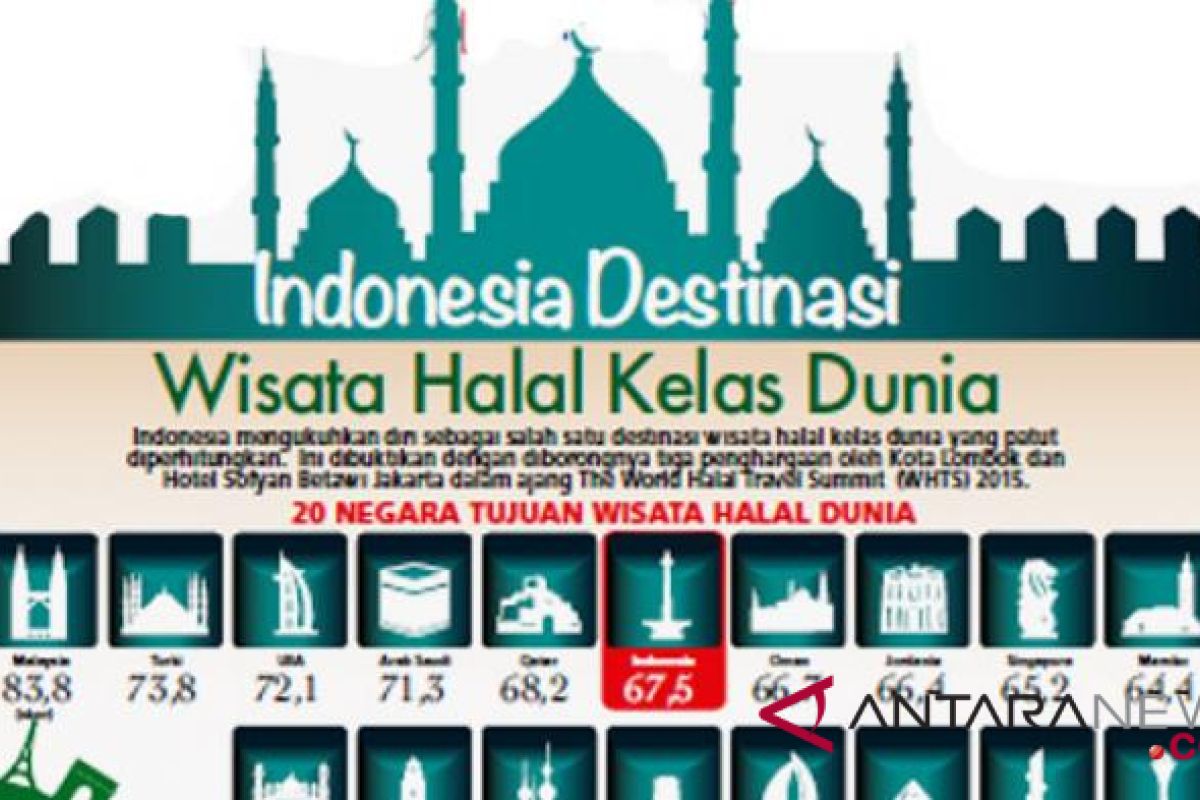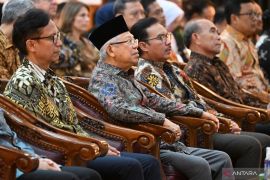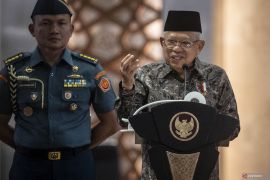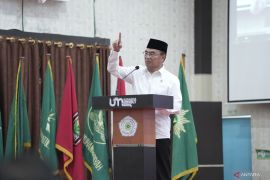It is estimated that by 2020, the total number of Muslim tourist arrivals across the world is expected to reach 156 million per annum, a figure that has the potential to advance the tourism of a country.
As a predominantly Muslim country, with a population of 265 million, Indonesia, therefore, is eager to attract Muslim tourists by creating halal tourism programs.
Indonesia`s Tourism Minister Arief Yahya is therefore developing halal tourism destinations and has set a target to attract five million foreign tourist arrivals of the halal tourism segment in 2019, or about 25 percent of the foreign tourist arrival target set at 20 million in 2019.
"Next year, our target is to attract five million halal tourism visitors, or up 42 percent from that of this year, at around 3.5 million. The five-million target is 25 percent of the total foreign tourist arrival target set at 20 million in 2019," Yahya remarked, at the launch of Indonesia Muslim Travel Index (IMTI) 2019 at the Soesilo Soedarman Hall, Sapta Pesona Building, Ministry of Tourism (Kemenpar) office, on Friday (Dec 7).
For this, the Ministry of Tourism works with Crescentrating Mastercard to launch the IMTI program to rank the most tourist-friendly halal destinations in Indonesia, with the criteria specified as used by the Mastercard-Crescent Global Muslim Travel Index (GMTI) that uses the ACES criteria (Access , Communications, Environment, and Services).
Mastercard Indonesia Director Tommy Singgih said that Indonesia has consistently tried to improve its position at GMTI. "In 2015, it was ranked sixth in the world, in 2017, it rose to the third position, and in 2018, it was ranked second along with the United Arab Emirates," Singgih said.
This consistency continues in an effort to reach the first rank.
On that occasion, Yahya launched a halal tourism target for 2019, which is to achieve sustainable growth and winning the first rank as the most friendly tourism destination for world Muslim tourists in the version of the Global Muslim Travel Index (GMTI).
Yahya explained that the high growth of Indonesian halal tourism is very necessary to convince business people of the halal tourism business in the country, which has 3S of interest: the market size is wide, the sustainable growth is high, and the profit spread is large.
"So far, we always lose to competitors from neighboring countries, especially from their size and growth," Yahya remarked.
Yahya explained that Indonesia is targeting to become the world`s best halal tourist destination 2019. "Next year, we want to be ranked first among tourism destinations and become the most friendly country to world Muslim tourists in the GMTI version. At the moment, we are ranked second along with the United Arab Emirates, while Malaysia is ranked first," Yahya elaborated.
He added that the rise of Indonesia to the first rank would make it easier for the country to seize the global halal tourism market, which is projected to reach US$220 billion by 2020.
Fazal Bahardeen of Crescent Rating & Halal Trip remarked that Indonesia has a great opportunity to realize it.
"Seeing the beauty of its nature and its rich culture, tourism offers a great growth opportunity for Indonesia. With its position as the largest Muslim country in the world, Indonesia has a core infrastructure and environment that can meet the needs of Muslim tourists," he noted.
There are 10 provinces included in the index (IMTI) this year, namely Aceh, Riau Islands, West Sumatra, Jakarta, West Java, Central Java, Yogyakarta, East Java, South Sulawesi, and Lombok (West Nusa Tenggara). Of the 10 destinations, the IMTI set Lombok to be ranked first, followed by Aceh and Jakarta.
Furthermore, it was followed by West Sumatra, Yogyakarta, West Java, East Java, West Java, and South Sulawesi.
According to the 2018 GMTI report, the expenditure of global Muslim tourists is projected to reach $220 billion in 2020 and is expected to grow by more than $80 billion to reach $300 billion by 2026.
President Joko Widodo (Jokowi), since the onset of his government, has set a gradual increase of foreign tourist arrivals from 9.4 million in 2014 to 20 million in 2019.
The government was able to meet its targets of 10 million in 2015 and 12 million in 2016. Yet, in 2017, the arrivals of foreign tourists in the country were recorded at only 14.04 million, lower than the targeted 15 million.
This year, the government must work all out to reach its target of 17 million foreign tourist arrivals and its target of 20 million arrivals next year.
Cumulatively, the number of tourist arrivals from January to October 2018 was recorded at 13.24 million. The 13.24 million tourists comprised 4.9 million from Asia, except the ASEAN, 4.4 million from ASEAN member states, and 1.7 million from Europe.
Until October this year, some 1.29 million tourists had visited Indonesia, up 11.24 percent from 1.16 million in the same month last year, according to the Central Board of Statistics (BPS).
Editing by Suharto
Reporter: Andi Abdussalam
Editor: Heru Purwanto
Copyright © ANTARA 2018












